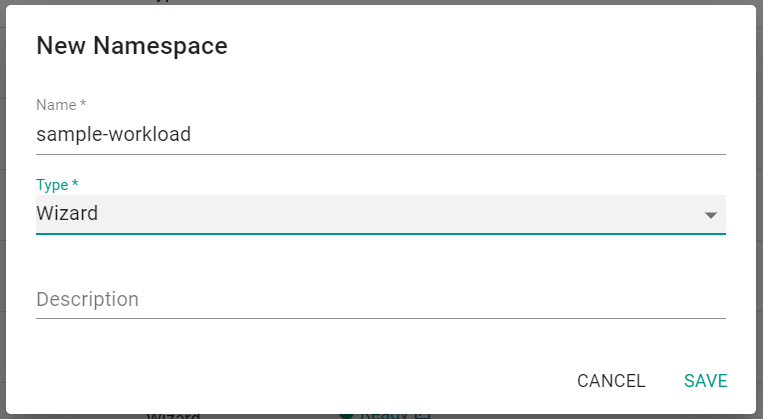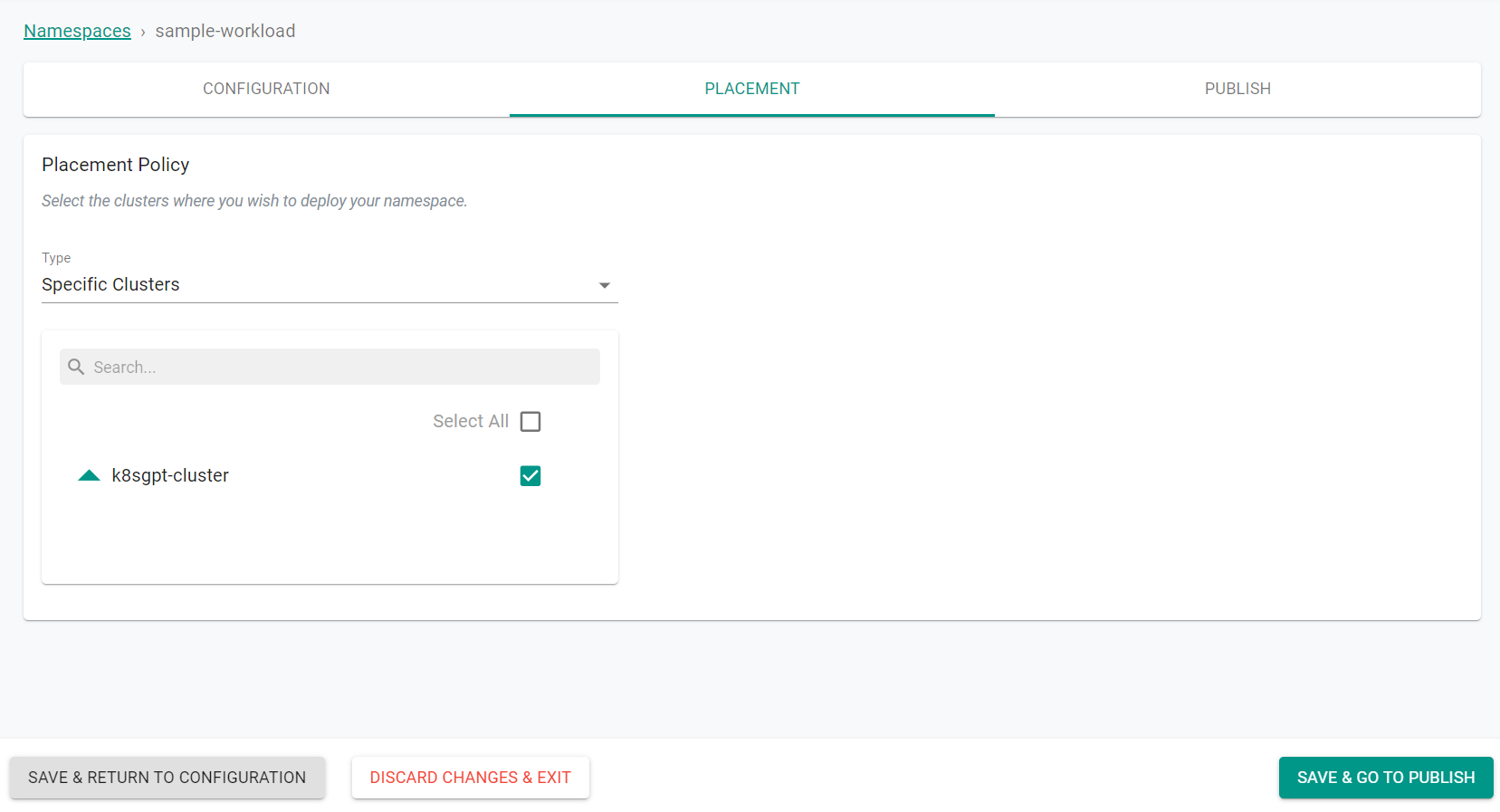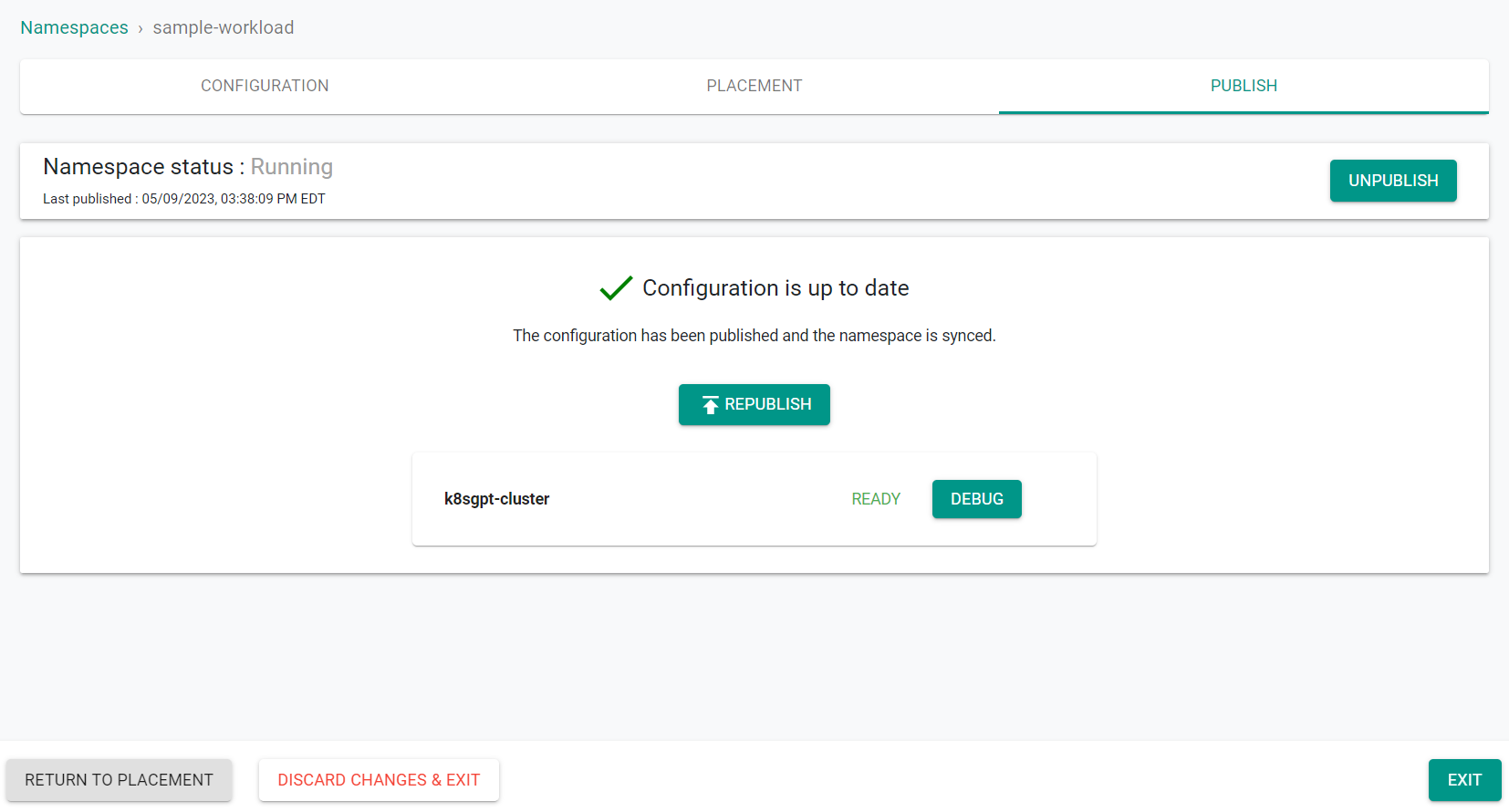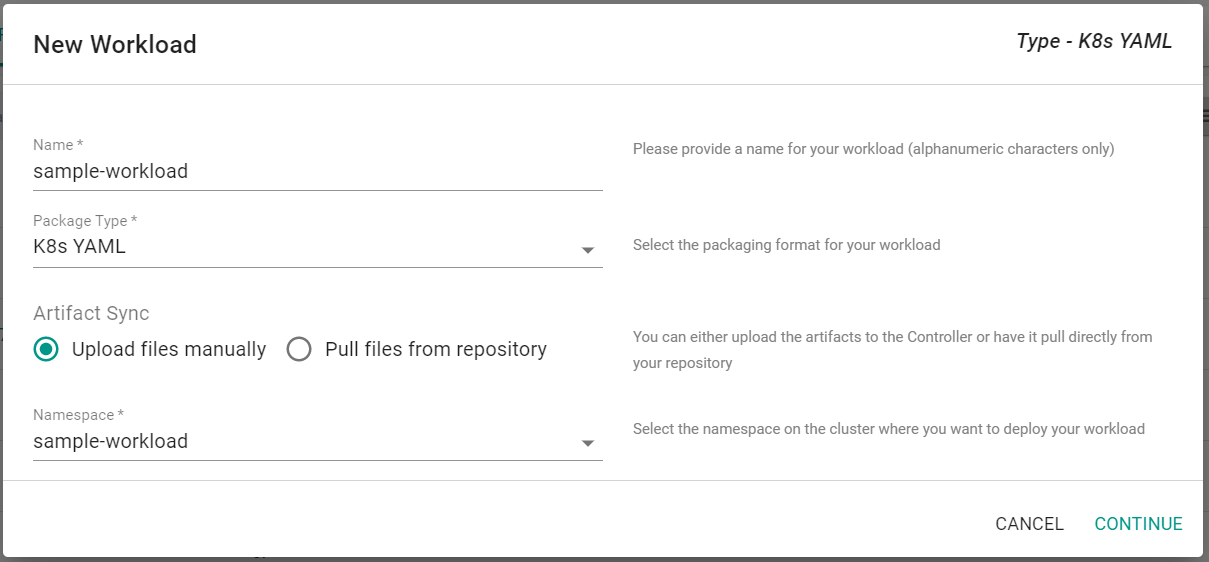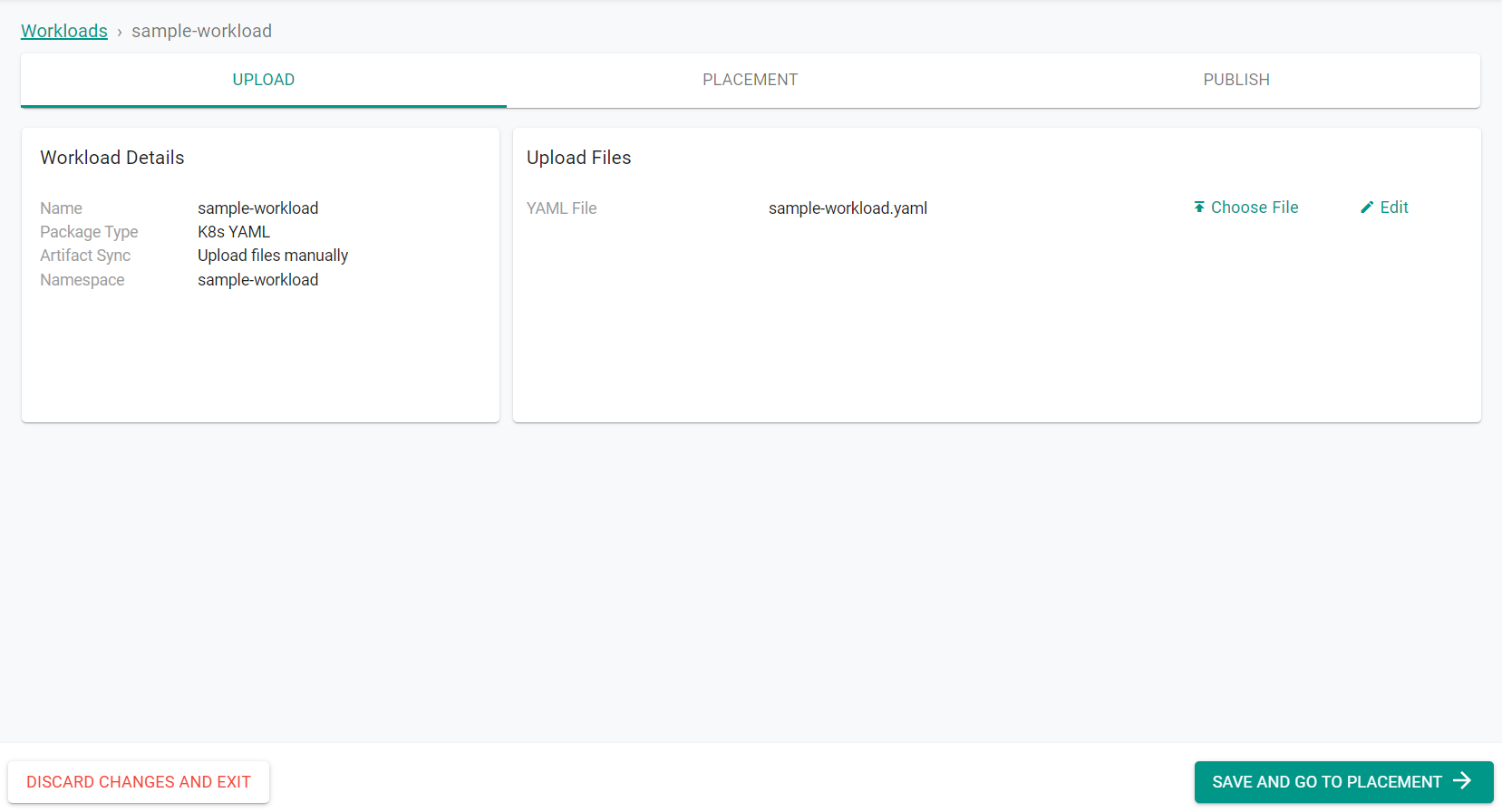Test
In this section, you will try to configure and deploy a "problematic" workload to the cluster with the K8sGPT blueprint. We will then verify whether it was able to identify the issue and assist the user with a recommendation for resolution.
Step 1: Create Namespace¶
In this step, you will create a namespace for the a sample workload that will be published to the cluster. The sample workload will be used to see how K8sGPT can scan and identify issues.
- Select Infrastructure -> Namespaces
- Click New Namespace
- Enter the name sample-workload
- Select wizard for the type
- Click Save
- Click Save & Go to Placement
- Select the cluster where the K8sGPT operator is installed
- Click Save & Go to Publish
- Click Publish
- Click Exit
Step 2: Create Workload¶
In this step, you will create a a workload which will be used to rest the K8sGPT operator.
- Save the below YAML to a file named sample-workload.yaml
Note
This service contains a selector that does not map to an existing pod. This will be picked up by K8sGPT.
apiVersion: v1
kind: Service
metadata:
name: myapp
spec:
type: ClusterIP
ports:
- name: myapp
protocol: TCP
port: 80
selector:
app: nonexistentapp
- Select Applications -> Workloads
- Click New Workload -> Create New Workload
- Enter a name for the workload
- Select K8s YAML for the package type
- Select Upload files manually
- Select sample-workload for the namespace
- Click Continue
- Click Choose File and select the previously saved sample-workload.yaml file
- Click Save & Go to Placement
- Select the cluster where the K8sGPT operator is installed
- Click Save & Go to Publish
- Click Publish
- Click Exit
Step 3: View K8sGPT Results¶
In this step, you will view the results of the K8sGPT Operator.
- Execute the following command
kubectl get results -A
You will see a result like the following providing details of the issue and possible resolution in simple terms.
{
"apiVersion": "v1",
"items": [
{
"apiVersion": "core.k8sgpt.ai/v1alpha1",
"kind": "Result",
"metadata": {
"creationTimestamp": "2023-05-09T19:55:28Z",
"generation": 1,
"name": "sampleworkloadmyapp",
"namespace": "kube-system",
"resourceVersion": "54316",
"uid": "76646698-a0f1-4632-9aad-2b0de48b2b44"
},
"spec": {
"details": "The service is looking for endpoints with the label \"app=nonexistentapp\", but it cannot find any. \n\nThe solution is to make sure that the label \"app=nonexistentapp\" is correctly assigned to one or more pods that are running the application. This can be done by checking the labels of the pods using the \"kubectl get pods --show-labels\" command and verifying that the \"app=nonexistentapp\" label is present. If it is not present, add it using the \"kubectl label pods \u003cpod-name\u003e app=nonexistentapp\" command. Once the label is correctly assigned, the endpoints should be discovered by the service and the error should be resolved.",
"error": [
{
"sensitive": [
{
"masked": "XUBj",
"unmasked": "app"
},
{
"masked": "azUvWklzT0pEUU1lMjA=",
"unmasked": "nonexistentapp"
}
],
"text": "Service has no endpoints, expected label app=nonexistentapp"
}
],
"kind": "Service",
"name": "sample-workload/myapp",
"parentObject": ""
}
}
],
"kind": "List",
"metadata": {
"resourceVersion": ""
}
}
Recap¶
Congratulations! You have successfully deployed the K8sGPT Operator on your managed Kubernetes cluster as an add-on in a custom cluster blueprint. You then tested the efficacy of the K8sGPT operator with a broken/misconfigured workload.
